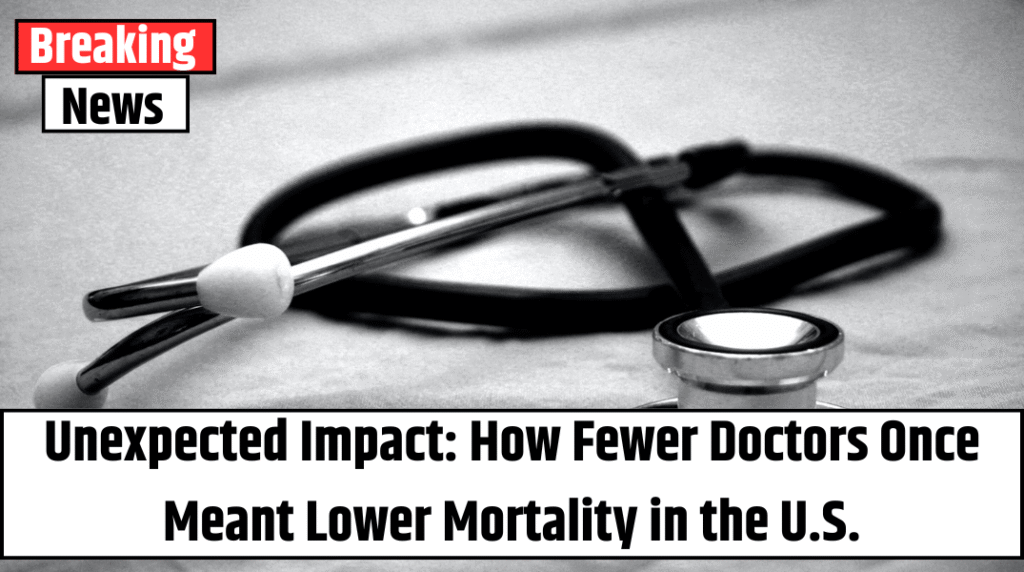In the early 20th century, sweeping reforms aimed at improving the quality of U.S. medical education led to a dramatic reduction in the number of medical schools. Now, over a century later, researchers have uncovered the long-term impacts of these closures—and the findings are remarkable.
A new study by economists from Carnegie Mellon University, Stanford University, and Marquette University shows that closing poor-performing medical schools between 1900 and 1930 not only improved the medical profession but also lowered infant and adult mortality rates.
Published as a working paper by the National Bureau of Economic Research (NBER), the research demonstrates how a reduction in the number of physicians—particularly those trained at substandard institutions—actually led to better health outcomes across the United States.
Background: Why So Many Medical Schools Were Shut Down
At the turn of the 20th century, the U.S. had a growing number of medical schools, many of which were privately owned, for-profit operations. These schools often lacked proper clinical training, rigorous curricula, and academic oversight.
Concerns over medical quality came to a head in 1910 with the release of the Flexner Report, a landmark document commissioned by the Carnegie Foundation and authored by educator Abraham Flexner. The report exposed glaring deficiencies in American medical education and called for widespread reforms—including the closure of many schools.
Also Read – Millions of Americans Face Medical Isolation with No Doctors or Telehealth
As a result, over 40% of U.S. medical schools either shut down or merged with more reputable institutions between 1905 and 1915.
Key Takeaways from the Study
To assess the impact of those closures, researchers analyzed U.S. Census data and county-level mortality statistics from 1900 to 1930. They created a new metric to measure how intensely each county was affected by nearby school closures—factoring in distance, school output, and timing.
Here’s what they found:
👨⚕️ 1. Fewer Doctors, But Better Healthcare
-
Counties within 300 miles of a closed medical school saw a 4% drop in physicians per capita.
-
The decrease came from both fewer new graduates entering the workforce and the reputational damage suffered by older physicians trained at shuttered schools.
🧳 2. Doctors Responded by Delaying Retirement or Moving
-
Many physicians postponed retirement or migrated to counties less affected by the closures.
-
These adjustments helped soften the impact of reduced graduate flow into the workforce.
🧑⚕️ 3. Nursing Workforce Grew
-
In response to the changing medical landscape, counties with high closure intensity saw a 7% rise in nurses per capita.
-
The number of midwives remained relatively stable.
🩺 4. Fewer Doctors, Better Outcomes
-
Infant mortality fell by 8%.
-
Non-infant mortality dropped by 4%.
-
Total mortality declined by 3%.
That translates into 16,000 fewer infant deaths and 38,000 fewer adult deaths every year—a significant public health achievement attributed directly to the removal of poorly trained medical personnel.
“It appears that reducing the supply of inadequately trained doctors actually improved survival rates,” said Margarita Portnykh, a coauthor of the study and economics professor at Carnegie Mellon’s Tepper School of Business.
What Drove the Mortality Reductions?
The study’s findings suggest that better quality, not quantity, made the difference. Areas affected by closures experienced steep reductions in deaths from infectious diseases and conditions affecting infants—ailments especially sensitive to physician competence.
Also Read – U.S. Cuts Vaccine Group Funding Over Claims It ‘Ignored the Science’
Interestingly, other public health measures such as local sanitation infrastructure, health departments, and hospital staffing did not explain the mortality declines, reinforcing the idea that physician quality played the central role.
What This Means for Today
While medical education has evolved significantly since the early 1900s, this study raises important questions about quality control in medical training—particularly as new private, international, and for-profit institutions emerge in the modern landscape.
Could stricter accreditation and standards improve public health outcomes today as they did a century ago? The answer may lie in this historical lesson: raising the bar for medical education can save lives—even if it means training fewer doctors.



